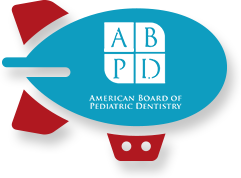Your Kids Will Love These Simple After School Snack Ideas
December 24th, 2015
One of the challenges of eating healthy is time. Busy parents often find that warming up a frozen snack or opening a packaged sweet is easier than making something healthy. Add to the problem of convenience the fact that many kids can be choosy about what they eat.
We believe that having healthy teeth begins to a great part with healthy eating. We also believe that choosing between snacks that are convenient, healthy and tasty is possible and we've put together a few recipes we think your kids will love. They're simple and require little prep time.
Dippers
It’s amazing how quickly children will gobble up vegetables, as long as they are served with dip. Keep a bowl of carrots, celery, cucumbers and cherry tomatoes available for grabbing after school. Most of these dips
will also taste delicious with Pita Bread or tortilla triangles, French
bread, or large pretzel sticks.
Ranch Dip is a favorite, but you can experiment with others.
Mix a 16oz. container of lite sour cream with dry soup mixes like tomato, vegetable or onion. Allow the dip to blend over night or mix it up in the morning.
Cream Cheese Dip
1 (8 ounce) package cream cheese with chives
1 (5 ounce) container sharp processed cheese food.
My children really love hummus for dipping vegetables and/or Pita bread.
I’m not always able to make it myself. So to keep up with the demand,
I purchase 16 oz. tubs from the grocery store.
Keep a jar of marinara sauce (Prego is our favorite), in the fridge.
After school, warm up a small bowl of sauce and serve it with bread
sticks for dipping.
Fruit Dips
Any of these dips taste delicious with apples, pears, bananas,
peaches or berries.
Fruit Dip #1
2 (8 ounce) packages cream cheese, softened
1/2 cup brown sugar
2 teaspoons vanilla extract
Fruit dip #2
Combine cream cheese and crushed pineapple to the desired taste and consistency. This also tastes delicious when made made with
canned mandarin oranges instead of pineapple. Drain as much of the
fruit juice as possible to avoid a runny dip.
Fruit Dip # 3
Mix cream cheese, apple sauce a dash of cinnamon and brown sugar.
Keep in the refrigerator in an airtight container.
Baked Cheese Bites
2 cups sifted all-purpose flour
1 pinch salt
6 ounces shredded Cheddar cheese
1/2 cup butter, melted
DIRECTIONS:
Preheat the oven to 325 degrees F (165 degrees C).
Lightly grease a large cookie sheet.
In a medium bowl, mix together the flour and salt. Stir in the cheddar cheese and melted butter to form a firm dough. Roll pieces of dough into ropes as big around as a penny. Slice into 1/4 inch pieces. You may need to chill the dough until firm for better rolling.
Place the slices onto the prepared cookie sheet, 1 inch apart.
Bake for 20 to 25 minutes until the bottoms of the coins are lightly
toasted and the tops are firm. Allow to cool completely before serving. Store in an airtight container at room temperature.
English Muffin “Pizzas”
Children enjoy making this one themselves!
Spread Spaghetti sauce on English muffin halves.
Top with sliced olives, deli slices, vegetables and grated mozzarella cheese. Heat in a toaster oven, or microwave until the cheese is melted.
One more idea...The Snack Zone
Just like adults…. when children arrive home famished, they will grab whatever is easiest. Often, it’s not the healthiest food options they gravitate to first. Keep a few of the above recipes prepared and ready to go. Assign a shelf or drawer in the refrigerator as the “snack shelf”
and jar or cupboard space for non perishables. This is where the kids
can grab a quick snack and don’t have to ask first. Then, stock cut fruit, vegetables, dips, cheese slices etc. A variety of healthy snack options will keep your little ones from getting bored and everyone will be happy.













